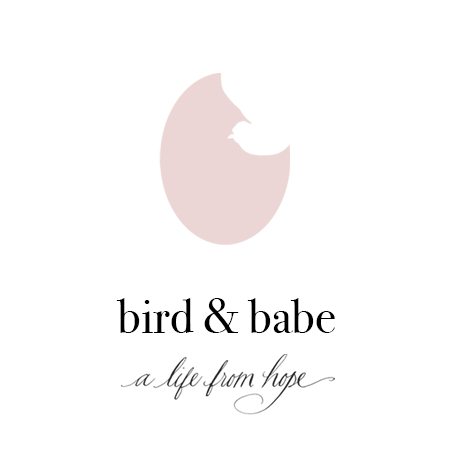Recreated beauty
This past spring, I opened up our mailbox to discover an envelope addressed to me. It was from San Francisco. Flipping the envelope over, sliding my index finger along the edge, I tore open the seal, and began to see an illustrated card. Curiosity arose. What was this image and what was this for?
With the card fully out, I saw a fluid illustration of a cracked vessel, her pieces held together by gold filament to create a whole more beautiful than the original creation. The tagline? There’s beauty from brokenness. Inside she wrote, “You’ve been through too many hard things for one person to bear.” She crossed out brokenness and wrote in something else. She gently went on about how my recent experience of pregnancy loss, news, surgery, and the possibility of cancer seemed unfair after previous, difficult seasons.
In that moment, I looked out and saw the daffodils in-bloom. A breeze slowly blowing over the tall shoots. A few years ago, I started a tradition of planting a daffodil for each young babe I lost in-utero.
This past summer, I opened up our mailbox to delightfully discover the arrival of a quarterly magazine I subscribed to. The fall edition explored being human—through design and home. Inside, a brief article highlighted a Japanese tradition that took broken pieces of pottery and created new pieces from the broken parts, held together by gold filament. Just like the card (which I had taped to my desk’s hutch), this essay went on exploring how this is similar to being human—there is brokenness and then there’s a process of artful repair which creates a new piece more beautiful than the first one. In other words (and if I understood the words), perhaps life is about resilience, just a little reconfigured—and this time, ending up more beautiful than the first time around.
I began to reflect upon this particular Japanese tradition known as Kintsugi that I had first learned about as a child.
Meanwhile, as the year progressed, and a new season arrived, I encountered yet another similar message.
This winter, I opened my inbox to receive a gift card from a family member. She acknowledged that our relationship was broken and hoped for newness. As a token, she passed on a gift card to a non-profit that took…broken pieces of pottery and refashioned them into new pieces of jewelry…beauty from brokenness…as went the seemingly life-refrain for me.
A few weeks ago, I started reading a new book on mercy. I had wanted to read Hallelelujah Anyway: Rediscovering Mercy by Anne Lamott, and then again, I sort of didn’t. Who likes giving mercy? One evening before dozing off, I came across a section about cracked parts and gold filament…
“The ancient Chinese had a practice of embellishing the cracked parts of valued possessions with gold leaf, which says: We dishonour it if we pretend that it hadn’t gotten broken. It says: We value this enough to repair it. So it is not denial or a cover-up. It is the opposite, an adornment of the break with gold leaf, which draws the cracks into greater prominence. The gold leaf becomes part of its beauty. Somehow the aesthetic of its having been cracked but still being here, brought back not to baseline but restored, brings increase.”
— ANNE LAMOTT (HALLELUJAH ANYWAY, P 50)
Now at that point, I thought—I get the message. Beauty in brokeness. There is newness to be had. (And truth be told, I had gotten that message ever since first encountering it as a child.) But the pounding of that message from this past year—the beauty-from-brokenness-Kintsugi-style—ironically began to shatter that metaphor for being human and revealed how I actually understood it, rather than the opposite happening—that the frequency of the message meant it was truer than ever before.
I understood and understand real and true healing to be different than simply being reconfigured (or a part of me refashioned into a different shape and beauty)—and I'd like to just note here that I appreciate Kintsugi, the aesthetic style, and inherent beauty of wasting nothing and recreating something beautiful—and that I cherish the thought behind the card, article, gift-card, and words on mercy.
I just see being (or becoming) human a little differently—and it took the repeated message to crack open that idea with the Spirit. This year was my hardest yet. And I have experienced hard. And this past nine-month gestational season ended with a choice to be birthed again—just like a babe actually does inside her mother's womb.
A choice.
A week into January, I would come across one more message about beauty from brokenness but this time, it was so different it couldn't ever compare—this was about the embodiment of life that came in the presence of the Spirit and with other believers. This embodiment and vision of life for me was as if broken pieces were simply falling away, revealing a new human coming out, radiated by Light. This wasn't about keeping the pieces of me in order for a rearrangement to happen (where then, say, Christ would be the "filament" holding me together). This also wasn't about a part of me chosen at random or with prayerful intention to be a new beautiful remnant of me (but now with a new take on life and purpose).
Rather, this was about the embodiment and healing of life that births a whole new creation from Christ the Light who utterly transforms the person from old to new. The heart is transformed (not just reconfigured) to now have, receive, and "be" (give) life. To heal and act from being healed—rather than my own way—in the daily journey of life. It's as if the Potter says to me, the clay—get up and walk.
Jump, play, run.
Breathe.
Become.
Live differently this time. Live from my grace, breath, life and you will have life in all seasons of life no matter the hardship or heartache.
